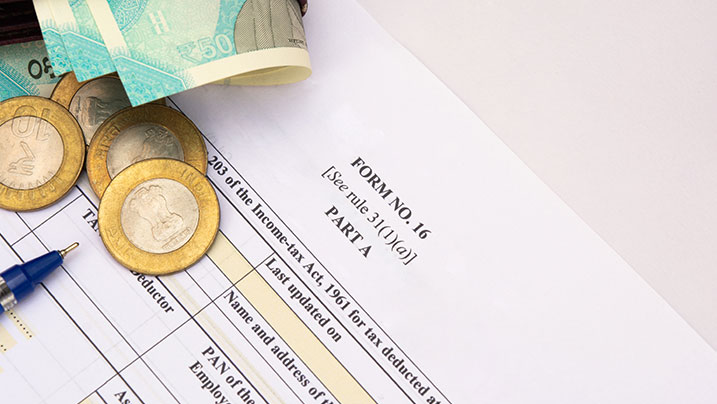CKYC Registry
-
Customer Service Contact us Service request Locate a branch
Find all the help you need
Scan the QR, get our app, and find help on your fingertips

Help CenterSupport topics, Contact us, FAQs and more
-
Login
Are you ready for an upgrade?
Login to the new experience with best features and services
-
Login
Are you ready for an upgrade?
Login to the new experience with best features and services
- Accounts
-
Deposits
IDFC FIRST Bank Deposits
View all Deposits -
Loans
IDFC FIRST Bank Loans
View all Loans - Wealth & Insure
-
Payments
IDFC FIRST Bank Payments
View all Payments -
Cards
IDFC FIRST Bank Cards
View all Cards - Blogs
- Corporate Account
-
Cash Management Services
IDFC FIRST Bank Cash Management Services
View all Cash Management Services - Supply Chain Finance
-
Corporate Lending
IDFC FIRST Bank Lending
View all -
Treasury
IDFC FIRST Bank Treasury
See more details - NBFC Financing
Support topics, Contact us, FAQs and more
- IDFC FIRST Bank Accounts
-
Savings Account
-
Corporate Salary
Account -
Senior Citizens
Savings Account -
First Power
Account -
Current Account
-
NRI Savings
Account -
TASC Institutional
Account -
Savings Account
Interest Calculator
- IDFC FIRST Bank Deposits
-
Fixed Deposit
-
Recurring Deposit
-
NRI Fixed Deposit
-
Safe Deposit Locker
-
FD Calculator
-
RD Calculator
- IDFC FIRST Bank Loans
-
Personal Loan
-
Consumer Durable
Loan -
Home Loan
-
Business Loan
-
Professional Loan
-
Education Loan
-
New Car Loan
-
Pre-owned Car Loan
-
Two Wheeler Loan
-
Pre-owned Two
Wheeler Loan -
Commercial Vehicle
Loan -
Gold Loan
-
Loan Against Property
-
Loan Against Securities
-
Easy Buy EMI card
-
Personal Loan
EMI Calculator -
Education Loan
EMI Calculator -
Home Loan
EMI Calculator
- IDFC FIRST Bank Wealth & Insure
-
FIRST Select
-
FIRST Wealth
-
FIRST Private
-
Mutual Funds
-
Sovereign Gold Bond
-
Demat Account
-
Term Insurance
-
Life Insurance
-
Health Insurance
-
General Insurance
-
Bonds
-
Loan Against
Securities -
Portfolio Management
Service
- IDFC FIRST Bank Payments
-
FASTag
-
Credit Card
Bill Payments -
UPI
-
Funds Transfer
-
Forex Services
-
Pay Loan EMI
- IDFC FIRST Bank Cards
-
Ashva :
Metal Credit Card -
Mayura :
Metal Credit Card -
FIRST Millennia
Credit Card -
FIRST Classic
Credit Card -
FIRST Select
Credit Card -
FIRST Wealth
Credit Card -
FIRST WOW!
Credit Card -
Deals
-
Debit Cards
-
Co-branded Cards
-
Credit Card
EMI Calculator -
FIRST Corporate
Credit Card -
FIRST Purchase
Credit Card -
FIRST Business
Credit Card
- Premium Metal Credit Cards
-
AshvaLifestyle1% Forex₹2,999
-
MayuraLifestyleZero Forex₹5,999
-
FIRST PrivateInvite Only
- Best for travellers
-
MayuraZero ForexMetal₹5,999
-
Ashva1% ForexMetal₹2,999
-
FIRST WOW!Zero ForexTravelLifetime Free
-
FIRST SWYPTravel OffersEMI₹499
-
FIRST Select1.99% ForexLifestyleLifetime Free
-
FIRST Wealth1.5% ForexLifestyleLifetime Free
-
Club VistaraTravelLifestyle₹4,999
-
IndiGo IDFC FIRST Dual Credit CardTravelLifestyle₹4,999
- Max benefits, Free for life
-
FIRST Classic10X RewardsShoppingNever Expiring Rewards
-
FIRST Millennia10X RewardsShoppingNever Expiring Rewards
-
FIRST Select10X RewardsLifestyle1.99% Forex
-
FIRST Wealth10X RewardsLifestyle1.5% Forex
-
FIRST WOW!RewardsTravelZero Forex
-
LIC ClassicRewardsInsuranceShopping
-
LIC SelectRewardsInsuranceShopping
- Reward Multipliers
-
AshvaLifestyleMetal₹2,999
-
MayuraLifestyleZero Forex₹5,999
-
FIRST ClassicNever Expiring RewardsShoppingLifetime Free
-
FIRST MillenniaNever Expiring RewardsShoppingLifetime Free
-
FIRST SelectNever Expiring RewardsLifestyleLifetime Free
-
FIRST WealthNever Expiring RewardsLifestyleLifetime Free
- Rewards & Credit on UPI
-
FIRST Power+FuelUPI₹499
-
FIRST PowerFuelUPI₹199
-
FIRST EA₹NVirtual1% Cashback₹499
-
FIRST DigitalVirtualUPI₹199
-
IndiGo IDFC FIRST Dual Credit CardUPITravelDual cards
- Fuel and Savings
-
FIRST PowerRewardsUPI₹199
-
FIRST Power+RewardsUPI₹499
-
LIC ClassicRewardsInsuranceShopping
-
LIC SelectRewardsInsuranceShopping
- Express and Flaunt
-
AshvaMetal1% Forex₹2,999
-
MayuraMetalZero Forex₹5,999
-
FIRST SWYPEMIOfferMAX₹499
-
FIRST MillenniaRewardsShoppingLifetime Free
- FD Backed rewarding Credit Cards for all
-
FIRST EA₹NVirtualCashback₹499
-
FIRST WOW!Zero ForexTravelLifetime Free
-
CreditPro Balance TransferTransfer & SaveReduce InterestPay Smartly
- IDFC FIRST Bank NRI Forex Solutions
-
Send money to India-Wire transfer
-
Send money to India-Digitally
-
Send money abroad
-
Max Returns FD (INR)
- IDFC FIRST Bank MSME Accounts
-
Platinum Current
Account -
Gold
Current Account -
Silver Plus
Current Account -
Merchant Multiplier
Account -
Agri Multiplier
Account -
TASC Institutional
Account -
Dynamic Current
Account -
World business
Account -
First Startup
Current Account
- IDFC FIRST Bank Business Loans
-
Business Loan
-
Professional Loan
-
Loan Against Property
-
Business Loan for Women
-
Working Capital Loan
-
Construction Equipment Loan
-
Machinery Loan
-
Healthcare Equipment Loan
- IDFC FIRST Bank Business Solutions
-
Payment Solutions
-
Tax Payments
-
Doorstep Banking
-
Point of Sale (POS)
-
Escrow Accounts
-
NACH
-
Payment Gateway
-
UPI
-
Virtual Accounts
-
As per amendment in the Income Tax Rules, PAN or Aadhaar are to be mandatorily quoted for cash deposit or withdrawal aggregating to Rupees twenty lakhs or more in a FY. Please update your PAN or Aadhaar. Kindly reach out to the Bank’s contact center on 1800 10 888 or visit the nearest IDFC FIRST Bank branch for further queries.
-
-
Most Searched
Sorry!
We couldn’t find ‘’ in our website
Here is what you can do :
- Try checking the spelling and search
- Search from below suggestions instead
- Widen your search & try a more generic keyword
Suggested
Get a Credit Card
Enjoy Zero Charges on All Commonly Used Savings Account Services
Open Account Now
Form 16 is a valuable document for taxpayers. It comes in handy while filing out your Income Tax Return (ITR) and when you need to claim TDS
Form 16 is a legal document companies provide to their employees. It is a pivotal document for salaried employees to file income tax returns. It states that TDS (Tax Deducted at Source) has been taken and deposited in the employee's government account. The form provides a breakdown of the employee's salary and TDS amount.
It provides a comprehensive summary of employee earnings, tax deductions at source, exemptions, and deductions. This formal document is not only crucial for verifying one's income but also simplifies filing income tax returns.
Knowing about the meaning and function of Form 16 is essential for all employees, as they may lose money in taxes. This article will guide you through Form 16's different components.
What is Form 16?
Form 16 is a certificate given to you by your employer. It contains the information you need to compile and file your income tax return. Employers are required to issue it every year by the 15th of June, immediately after the financial year.
READ MORE
Form 16 eligibility
Form 16 is a document provided by employers to their employees as proof of income earned and taxes deducted at source. It applies to salaried individuals whose tax gets deducted under the Income Tax Act, 1961. Form 16 is not relevant for self-employed individuals or those with income from sources other than salary.
Why is Form 16 required?
Form 16 is a crucial document required for income tax filing in India. It serves two primary purposes:
- It offers salaried individuals an authenticated summary of their earnings and taxes deducted at source by their employer during a financial year.
- It simplifies the income tax filing process by providing a consolidated view of income and deductions.
When filing electronic taxes, taxpayers can easily refer to Form 16 details, ensuring accurate reporting of income and deductions. It helps prevent discrepancies, minimises errors, and expedites the tax return process. This makes it easier for individuals to comply with tax regulations.
When is Form 16 issued?
Form 16 is typically issued by the month of May or June following the end of the financial year. The financial year for income tax purposes in India runs from April 1st to March 31st of the following year. So, for instance, if you are referring to the financial year 2022-2023, it starts on April 1, 2022, and ends on March 31, 2023. Form 16 summarises the income and tax deductions for that specific financial year.
Part A of Form 16
Part A of Form 16 contains information such as the amount deducted and deposited quarterly, as well as the employer's PAN and TAN (Tax Deduction Account Number). This section of Form 16 can be generated and downloaded using the TRACES portal. The employer should authenticate the certificate contents before it is issued.
Also remember that if you move jobs within a financial year, each employer will provide a unique Part A of Form 16 for the time you worked there. Part A includes the following elements:
1. The employer's name and location
2. Company's TAN and PAN
3. The employee’s PAN
4. Quarterly summary of taxes deducted and deposited, certified by the company
Part B of Form 16
The employer provides Part B of Form 16 to its employees. It contains information on salary breakdown and deductions permitted under Chapter VI-A. If you switch jobs within a fiscal year, you must obtain Form 16 from both companies. The following are some of the recently notified Part B components:
1. Salary breakdown in detail
2. A detailed breakdown of Section 10 exempt allowances
The Form 16 provides your salary breakdown and the TDS deducted by the employer. It has two parts: Part A and Part B.
Difference between Form 16, Form 16A, and Form 16B
Here are the key differences between Form 16, Form 16A, and Form 16B:
Form 16:
1. Issued by employers: Form 16 is issued by employers to salaried employees.
2. Content: It provides a comprehensive summary of an individual's salary income, including details of tax deducted at source (TDS), exemptions, deductions, and net taxable income.
3. Applicability: It applies to salaried individuals and pertains specifically to income from salary.
4. Frequency: Employers issue Form 16 annually, typically in June or July after the end of the financial year.
5. Tax payment: It reflects the employer's TDS deductions on salary income and helps employees calculate their tax liability.
Form 16A:
1. Issued by deductors: Form 16A is issued by entities other than employers, such as banks, to individuals from whom tax has been deducted at source from income sources other than salary.
2. Content: It summarises income details other than salary income, such as interest income, professional fees, or rental income, along with TDS deductions.
3. Applicability: It appliesis applicable to a broad range of individuals who receive income subject to TDS, not limited to salary.
4. Frequency: Form 16A is issued periodically based on transactions that trigger TDS. For example, banks may issue it quarterly for interest income.
5. Tax payment: It helps recipients of non-salary income determine the TDS deducted and facilitates income tax filing.
Form 16B:
1. Issued for property transactions: Form 16B is specifically related to property transactions and is issued by the property buyer to the seller.
2. Content: It contains details of TDS deductions made on the sale of property, such as the purchase amount, TDS amount, and the TDS certificate number.
3. Applicability: Form 16B is relevant when purchasing property from a seller who is a non-resident Indian (NRI).
4. Frequency: It is issued for each property transaction subject to TDS, and the frequency depends on the number of property transactions.
5. Tax payment: Form 16B is essential for the seller to claim credit for the TDS deducted on the property sale while filing their income tax return.
What is the use of Form 16?
Form 16 is a vital document for the following reasons:
- It serves as documentation that your company has deducted and deposited your tax with the government
- It aids in electronic tax return filing
- When you visit a bank or financial institution for a loan, they ask for a Form 16
What is Form 16 in income tax?
When filing your Income Tax Return (ITR), you must provide specific information. Form 16 contains these specifics, including:
- Exempt expenses under section 10 of the Income Tax Act.
- Deductions under Section 16 of the Income Tax Act. It includes income from home and property subject to TDS
- TDS deducted from income from other sources
· A breakdown of the deductions available under Chapter VI-A of the Income Tax Act, including Sections 80C, 80CCC, Section 80CCD (1), Section 80CCD (1B), Section 80CCD (2), Section 80D, and Section 80E
- The taxable amount as per Chapter VI-A of the Income Tax Act, including deductions under Sections 10(a), 10(b), 10(c), 10(d), 10(e), 10(f), 10(g), 10(h), Section 10(i), Section 10(j), and Section 10(l)
- Details on the amount you need to pay as tax or what needs to come back as a refund
Additional information on Form 16 is necessary when filing a tax return. It includes:
- Employer’s TAN
- Employer’s PAN
- Name and address of the employer
- Year of assessment
- The taxpayer's name and address
- PAN (taxpayer identification number)
Form 16 is a critical document for working individuals. It helps reclaim excess taxes deducted in your name and helps file your ITR.
Frequently Asked Questions
How to get Form 16?
Your employer issues Form 16, and they typically provide it by May or mid-June every year. Upon receiving Form 16, it's crucial to carefully review the details it contains, which include your income, tax deductions at source (TDS), exemptions, and deductions.
If you identify any inaccuracies or discrepancies in the form, promptly notify your employer for necessary corrections. Form 16 plays a pivotal role in the income tax filing process. It furnishes the necessary information to help you file your taxes accurately and stay in compliance with tax regulations.
How to get Form 16 from your employer?
Any company or employer that deducts income taxes must issue Form 16. Your employer may issue a paper copy or soft copy of Form 16, downloaded from the TRACES website. You may also access your Form 16 from an online payroll platform that your company provides.
Maintain copies of Form 16 for your records. It serves as a critical document for income tax filing, helping you accurately file your taxes in compliance with tax regulations.
How to get Form 16A?
Similar to getting your Form 16, you can request your employer to issue Form 16A. You can sign in to your payroll portal to download this document. If your tax is deducted on rent income, you can ask your tenant to issue you Form 16. If you are a commission agent, and any deductions are made on the commission due to you, you can ask your employer for Form 16A.
How to get Form 16B?
To obtain Form 16B, request the buyer of the immovable property to issue you Form 16 for the tax deducted from the sale value.
How to get Form 16 from previous years?
Form 16 from previous years can also be obtained by contacting your employer. Most companies have a payroll portal to address this issue. You can use your login credentials on the payroll portal and download a soft copy of your Form 16 from previous years. Note that the TRACES website is not available to employees and only employers can use it to update Form 16 and TDS details.
Filing an income tax return with Form 16
Filing your Income Tax Return (ITR) with Form 16 is simplified in India. All you need to do is gather essential documents like Form 16, PAN card, Aadhaar card, and bank statements. Visit the official Income Tax Department website and either register or log in.
Select the appropriate ITR form, typically ITR-1 for salaried individuals, and download it. Fill in the necessary details in your Form 16. Validate the data and generate an XML file.
Return to the portal and upload the XML file. The portal will calculate your tax liability. Ensure the tax calculation aligns with your calculations. You can electronically verify your return through Aadhaar OTP, Net Banking, or EVC.
Submit your return, and you'll receive an acknowledgment (ITR-V) upon successful submission. Keep a copy for your records, or e-verify without sending a physical copy. The Income Tax Department will process your ITR and communicate any refund or tax dues
What to do after e-filing your tax returns
After e-filing your tax returns, there are a few essential steps that you need to complete. Download and print the acknowledgment receipt called ITR-V, which you will receive after filing electronically. Next, you need to verify your filing, which can be done online. You can also download the receipt, sign it in blue ink, and send it to the Centralised Processing Centre (CPC) of the Income Tax Department within 120 days.
Next, keep track of your return's processing status on the official income tax website to ensure it's being reviewed. If you receive any notices or communications from the tax department, respond promptly and provide the requested information or clarification.
If you are entitled to a tax refund, monitor your bank account for refund credit. Processing time varies, but is usually within a few weeks to months.
Additionally, maintain copies of your filed return, Form 16, and other supporting documents for at least seven years. These documents may be necessary for future reference or audit.
Lastly, begin planning for the next financial year by organising your financial records, tracking expenses, and ensuring timely compliance with tax regulations. This will make the tax-filing process smoother in the future.
Is Form 16 mandatory?
Form 16 is mandatory for salaried individuals. It is a vital document issued by employers, summarising an employee's income and tax deductions. It serves as proof of income and is crucial for a successful tax return filing. Employers are legally obligated to provide Form 16 annually. Not receiving Form 16 can lead to difficulties filing taxes and may result in penalties for the employer.
Can you file income tax returns without a Form 16?
You can file income tax returns in India even without Form 16. Form 16 is a document provided by your employer summarising your income and tax deductions, but it's not the sole source of information for filing taxes.
You can gather the necessary details from other sources such as salary slips, bank statements, and investment proofs. However, Form 16 simplifies the process and ensures accuracy. If you don't have your Form 16, consult a tax professional or use online tax-filing platforms to guide you through the process based on your financial records.
What to do if your employer deducts TDS but Form 16 is not provided?
If your employer deducts TDS (Tax Deducted at Source) but fails to provide a Form 16, you should take the following steps:
1. Contact your employer: Reach out to your employer and request the issuance of your Form 16. It's their legal obligation to provide this document.
2. Collect supporting documents: In the absence of Form 16, gather other supporting documents such as salary slips, bank statements, and proof of tax payments. These will help you calculate your taxable income accurately.
3. File taxes on time: Ensure you file your income tax return on time, even if you don't have your Form 16. Use the gathered documents to report your income, deductions, and TDS details.
4. Maintain records: Keep copies of all communication with your employer and the documents you used for tax filing. These may be required for any future tax assessments or audits.
5. Seek professional advice: If your employer continues to neglect providing a Form 16 or if you face complications, consider seeking advice from a tax consultant or contacting the Income Tax Department for assistance.
Form 16 is an essential document for salaried individuals in India. It serves as proof of income and tax deductions, facilitating accurate income tax return filing. Employers are legally obliged to provide Form 16 annually, ensuring compliance with tax regulations. It simplifies the tax-filing process, helping taxpayers meet their obligations effectively while maintaining accuracy.
Disclaimer
The contents of this article/infographic/picture/video are meant solely for information purposes. The contents are generic in nature and for informational purposes only. It is not a substitute for specific advice in your own circumstances. The information is subject to updation, completion, revision, verification and amendment and the same may change materially. The information is not intended for distribution or use by any person in any jurisdiction where such distribution or use would be contrary to law or regulation or would subject IDFC FIRST Bank or its affiliates to any licensing or registration requirements. IDFC FIRST Bank shall not be responsible for any direct/indirect loss or liability incurred by the reader for taking any financial decisions based on the contents and information mentioned. Please consult your financial advisor before making any financial decision.
The features, benefits and offers mentioned in the article are applicable as on the day of publication of this blog and is subject to change without notice. The contents herein are also subject to other product specific terms and conditions and any third party terms and conditions, as applicable. Please refer our website www.idfcfirstbank.com for latest updates.























